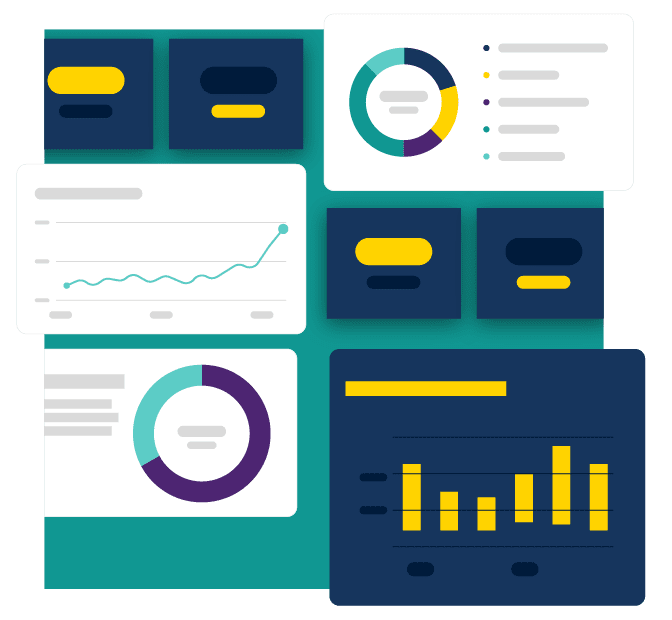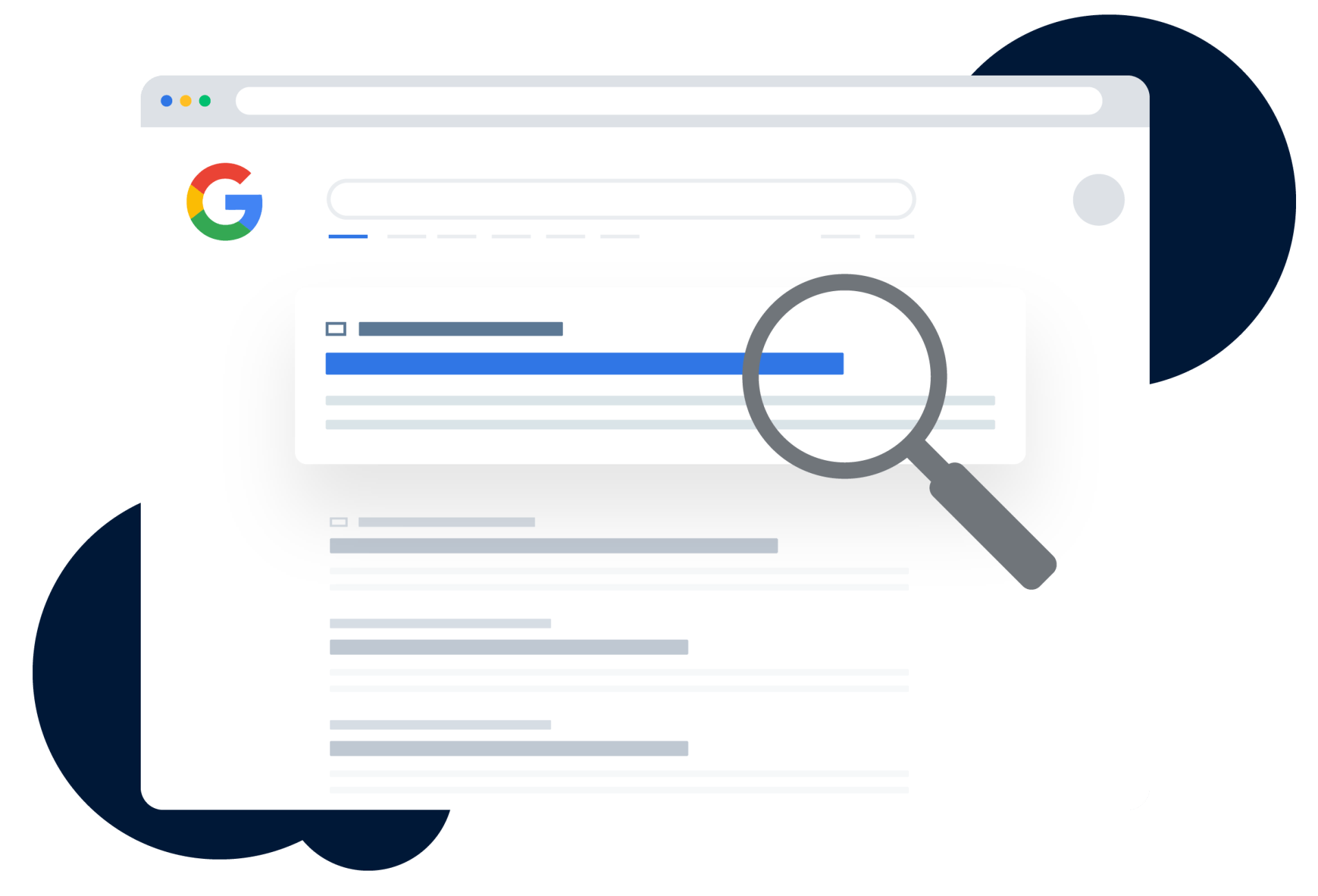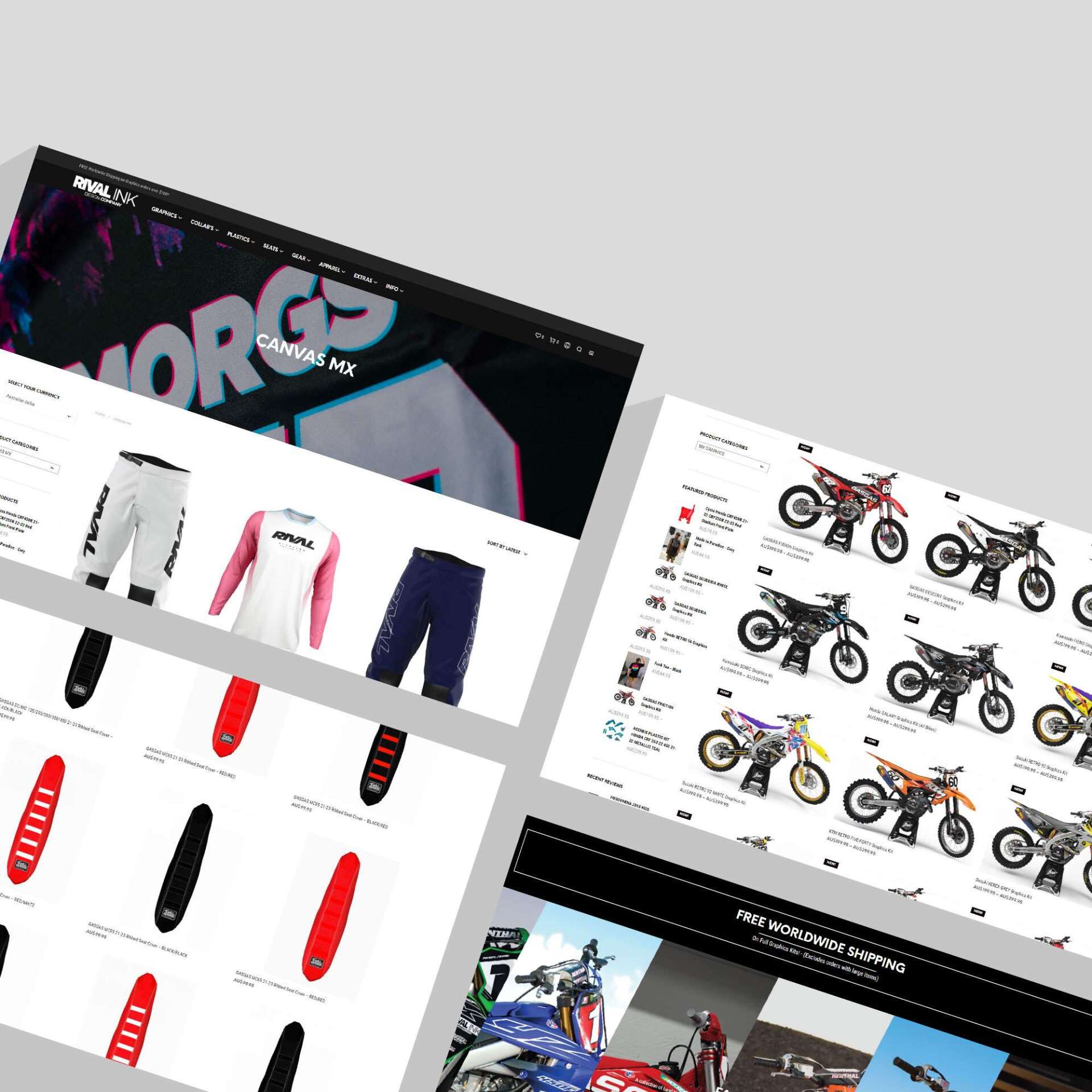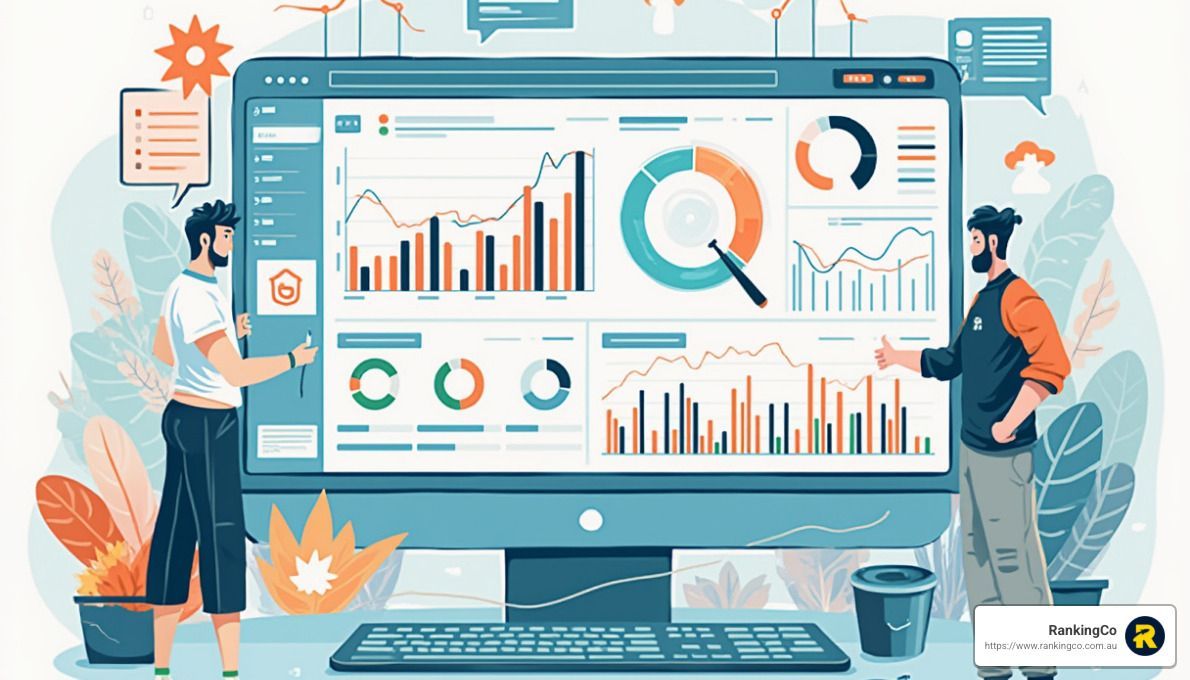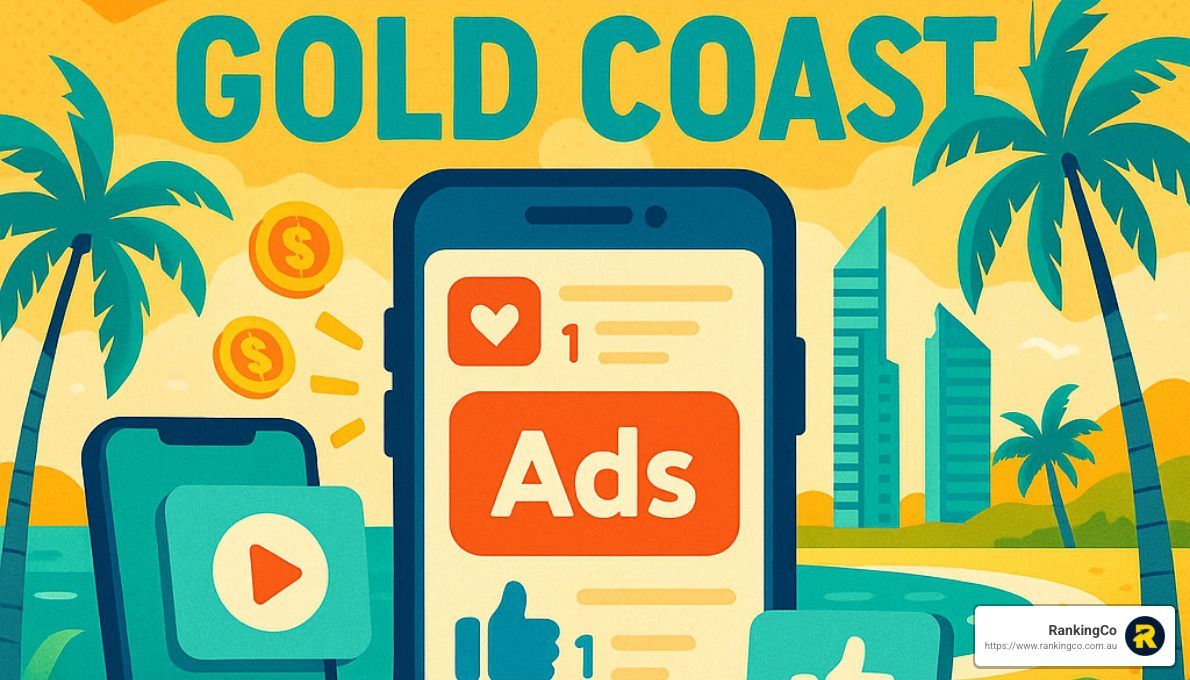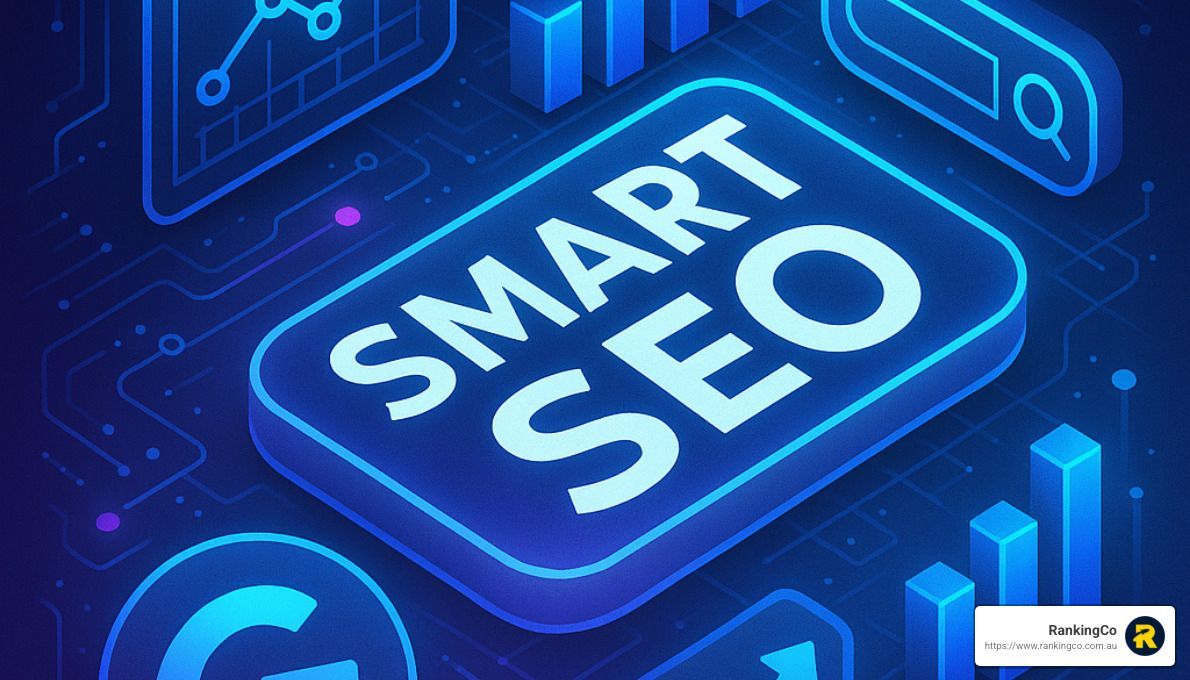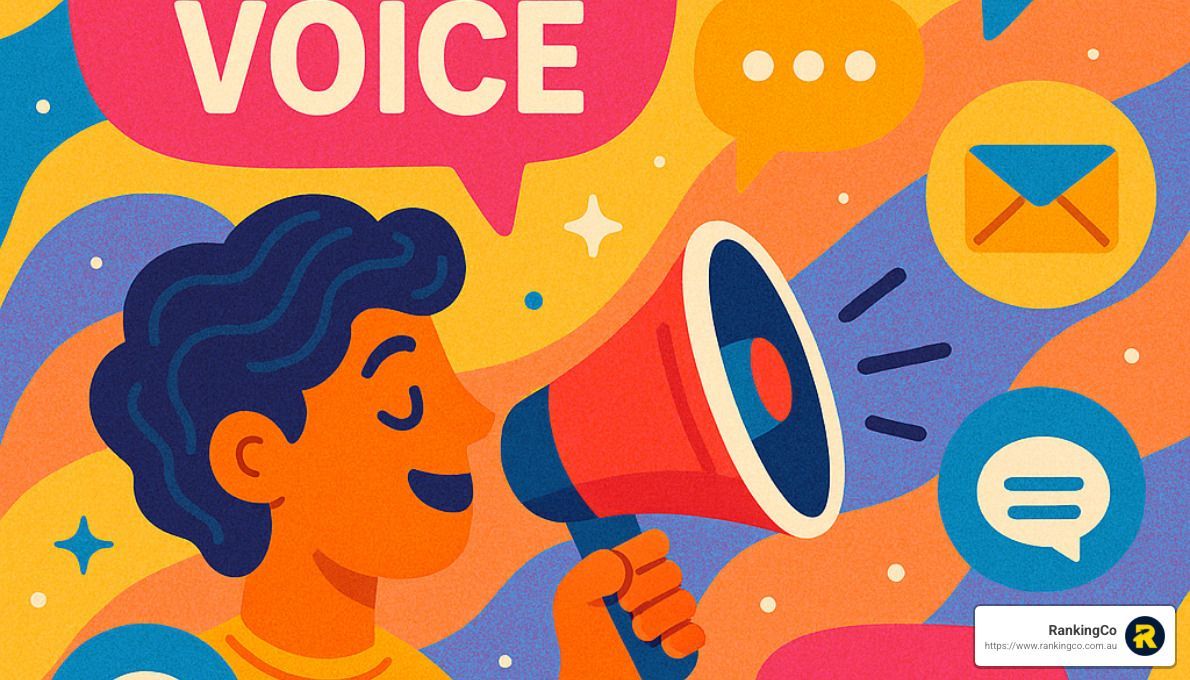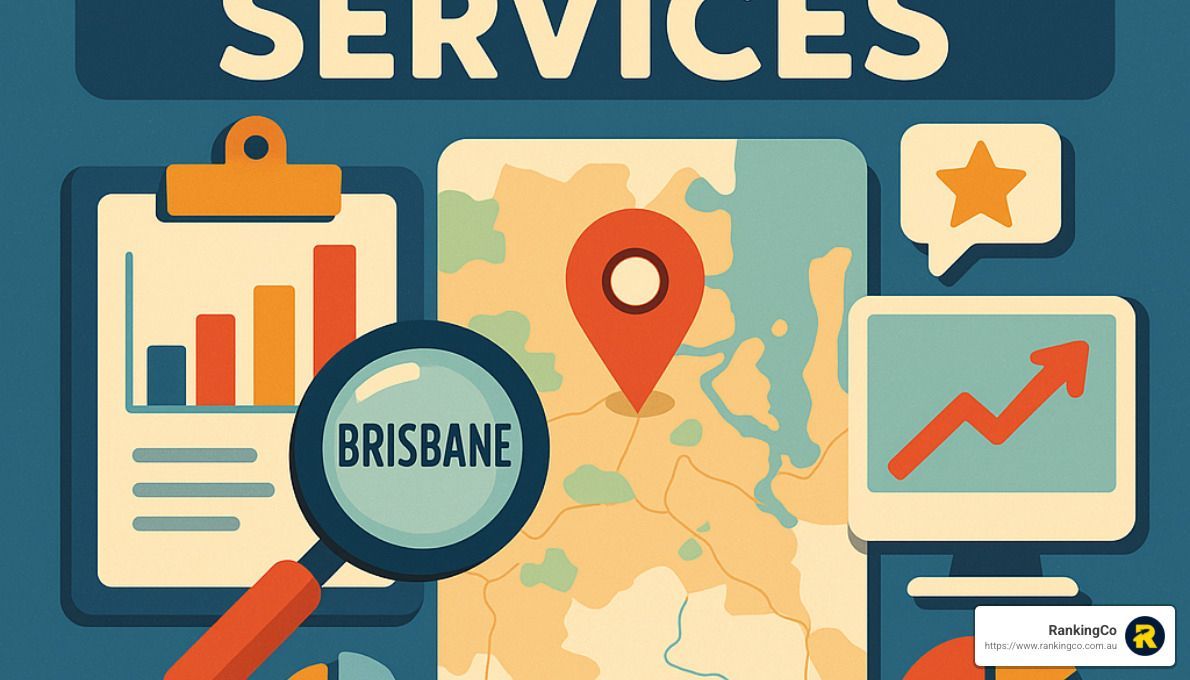The Complete Guide to Meta Advertising
Meta advertising is a game-changer in online marketing. With over three billion active users across its platforms—Facebook, Instagram, Messenger, and WhatsApp—Meta offers unparalleled reach. Here's why businesses should consider jumping on board:
- Massive Audience Reach: Connect with a vast and diverse user base.
- Precise Targeting: Hone in on your ideal customers using advanced targeting features.
- Cost Efficiency: Set and control your advertising budget to maximise ROI.
- Automation and Integration: Use powerful tools and integrations to streamline your campaigns.
Leveraging Meta's platforms allows businesses to target customers with unprecedented accuracy.
I'm Amber Porter, co-founder of RankingCo and veteran in crafting digital marketing strategies that help businesses thrive. With my experience in Meta advertising, I've seen how it can lift brands and drive results. Let’s dive deeper into how Meta can transform your advertising approach.
Understanding Meta Advertising
What is Meta Advertising?
Meta advertising refers to the suite of advertising solutions offered by Meta Platforms Inc. This includes ads across Facebook, Instagram, Messenger, and the Audience Network. These platforms allow businesses to reach specific audiences based on demographics, interests, behaviors, and even past interactions with the brand. This precision ensures that your ads are not just seen but are seen by the right people.
Why Use Meta Advertising?
Meta advertising stands out for several reasons:
- Massive Audience Reach: With over three billion active users, Meta platforms provide businesses with an extensive audience. This reach is crucial for businesses looking to expand their customer base.
- Advanced Targeting Capabilities: Meta's sophisticated targeting options let you focus on your ideal customers. You can tailor ads based on location, age, gender, interests, and even past interactions with your brand.
- High Engagement Rates: Platforms like Facebook and Instagram boast high user engagement, making them ideal for driving interactions with your ads.
Key Platforms under Meta
Facebook remains a powerhouse in social media advertising. It is the most popular social media channel, accounting for a significant portion of social media usage in Australia. Facebook ads are designed to seamlessly integrate into users' feeds, making them feel like a natural part of the browsing experience. With features like Lookalike Audiences, businesses can reach new potential customers who share similarities with their existing audience.
Instagram is known for its visually-driven platform, making it perfect for brands that rely on stunning visuals to capture attention. As the fourth most popular social media platform in Australia, Instagram offers businesses a unique opportunity to tap into a younger, more visually-oriented audience. Carousel ads, video ads, and Stories ads are just a few of the formats available to engage users.
Messenger
Messenger provides a direct line of communication with potential customers. With the ability to send personalised messages and offers, businesses can create a more intimate connection with their audience. Messenger ads can appear in the chat list, in conversations, or even as sponsored messages, providing multiple touchpoints for engagement.
Audience Network
The Audience Network extends the reach of your ads beyond Meta's platforms. It allows businesses to place ads in third-party apps and websites, amplifying their reach and visibility. This network helps in reaching users even when they're not actively browsing Facebook or Instagram.
Meta advertising is not just about placing ads; it's about strategically using Meta's platforms to connect with your audience in meaningful ways. With the right approach, businesses can leverage these platforms to drive engagement, conversions, and ultimately, growth.
Next, let's explore how to set up your Meta Ads account to start leveraging these powerful platforms.
Setting Up Your Meta Ads Account
Before you dive into Meta advertising, it's crucial to have a solid foundation. This starts with setting up your Meta Ads account. Let's walk through the process step-by-step, ensuring you're ready to launch your campaigns with confidence.
Creating a Meta Business Manager Account
The first step in your Meta advertising journey is creating a Meta Business Manager account. This tool is essential for managing your business's presence across Meta platforms like Facebook and Instagram.
Why use Meta Business Manager?
- Centralised Control: Manage all your ad accounts, pages, and people in one place.
- Improved Security: Keep your business assets safe with secure access controls.
- Seamless Collaboration: Easily add and remove team members and partners.
Step-by-Step Guide:
- Visit the Meta Business Manager Website: Go to the Meta Business Manager site.
- Create an Account: Click on "Create Account" and fill in your business details, including name, email, and business information.
- Add Your Business Assets: Link your Facebook pages, ad accounts, and Instagram profiles.
- Assign Roles: Set up roles for team members, ensuring they have the appropriate access and permissions.
Navigating Ads Manager
Once your Business Manager account is set up, it's time to explore Ads Manager. This tool is your command center for creating, tracking, and optimising ads.
Key Features of Ads Manager:
- Ad Creation: Easily create ads with step-by-step guidance.
- Real-Time Analytics: Monitor ad performance with up-to-date metrics.
- Budget Management: Set and adjust ad spend to maximise ROI.
How to Organise Your Ads:
- Ad Accounts: Manage multiple ad accounts for different campaigns or clients.
- Pages and Pixels: Connect your Facebook pages and install the Facebook Pixel on your website to track conversions and retargeting efforts.
Connecting Your Business Accounts
Integrating your Facebook and Instagram accounts is crucial for seamless cross-platform advertising. This integration allows you to run ads across both platforms and manage interactions from a single dashboard.
Steps to Connect Accounts:
- Go to Business Settings: In Meta Business Manager, steer to "Business Settings."
- Add Instagram Account: Under "Accounts," select "Instagram Accounts" and click "Add." Enter your Instagram login details.
- Verify Connection: Ensure your Instagram account is linked to your Facebook page for optimal ad performance.
By following these steps, you'll ensure your Meta ads account is set up correctly, providing a strong foundation for your advertising campaigns.
Next, we'll dive into the exciting world of audience targeting in Meta ads, showing you how to reach the right people with precision.
Audience Targeting in Meta Ads
Once your Meta Ads account is set up, the next critical step is mastering audience targeting. This allows you to reach the right people with your ads, ensuring your marketing dollars are well spent. Let's explore the different ways to target your audience effectively.
Audience Segmentation and Custom Audiences
Audience segmentation is all about dividing your audience into smaller, more manageable groups based on specific criteria. This could be demographics, interests, or past interactions. One powerful tool for segmentation is Custom Audiences.
What are Custom Audiences?
- Website Visitors: Target people who have visited your website.
- Email Lists: Upload your customer email list to find users on Meta platforms.
- App Users: Reach users who have interacted with your app.
By creating Custom Audiences, you can re-engage with people who have already shown interest in your brand.
Lookalike Audiences – Expanding Your Reach
Once you have a solid Custom Audience, you can expand your reach with Lookalike Audiences. This feature allows you to find new potential customers who share similar characteristics with your existing audience.
- Why Use Lookalike Audiences? It's a great way to tap into new markets without starting from scratch.
- How to Create: Simply select a source audience, and Meta will find users with similar traits.
Interest and Demographic Targeting
Meta's platforms offer advanced targeting capabilities, allowing you to tailor your ads based on interests and demographics.
- Interest Targeting: Choose from a wide range of interests like hobbies, entertainment, and shopping habits. This ensures your ads are shown to people likely to be interested in your products.
- Demographic Targeting: Filter your audience by age, gender, location, and more. For example, if you're promoting a local event in Brisbane, you can target users in that area specifically.
Retargeting Strategies
Retargeting is a powerful strategy to convert users who have interacted with your brand but haven't yet made a purchase.
- How Retargeting Works: Use the Facebook Pixel to track website visitors and show them custom ads based on their site activity. This keeps your brand top-of-mind and encourages conversions.
- Example Strategy: Show ads to users who added items to their cart but didn't complete the purchase, offering them a special discount to close the sale.
Geo-Targeting & Local Ads
For businesses with a local presence, geo-targeting is essential. This allows you to show ads to users in specific locations, perfect for driving foot traffic or promoting local services.
- Hyper-Local Advertising: Target users within a specific radius of your business location. This ensures your ads reach people who are most likely to visit.
- Case Study: A Brisbane café used geo-targeting to promote a new menu item, resulting in a 30% increase in foot traffic.
By leveraging these audience targeting techniques, you can ensure your Meta advertising strategy is both efficient and effective. Next, we'll explore how to craft high-impact Meta ads that capture attention and drive results.
Crafting High-Impact Meta Ads
Creating high-impact Meta ads is essential for capturing attention and driving conversions. This involves choosing the right ad formats, crafting compelling visuals and copy, and using effective calls-to-action (CTAs).
Types of Meta Ads
Meta offers a variety of ad formats to suit different goals and audiences. Here’s a breakdown of the most popular types:
- Image Ads: Simple yet effective, these ads use a single image to convey your message. Great for brand awareness and engagement.
- Video Ads: Capture attention with moving visuals. Perfect for storytelling or showcasing product features.
- Carousel Ads: Allow users to swipe through multiple images or videos in a single ad. Ideal for displaying a range of products or different features of a service.
- Collection Ads: Feature a cover image or video with multiple products underneath. These are excellent for eCommerce businesses looking to showcase a product catalog.
- Stories Ads: Full-screen ads that appear in users’ stories on Instagram and Facebook. These are immersive and can be highly engaging.
Choosing the right ad format depends on your campaign goals. For example, if you want to drive sales, a collection ad might be more effective. If you're aiming for brand awareness, an image ad could be the way to go.
Ad Creative Best Practices
Crafting engaging ad creatives is crucial. Here are some best practices to follow:
- Keep It Simple: Your message should be clear and concise. Avoid clutter in your visuals and focus on one key message.
- Use High-Quality Visuals: Ensure your images and videos are high resolution. Poor-quality visuals can diminish trust and engagement.
- Brand Consistency: Maintain a consistent brand tone and style across all ads. This helps in building brand recognition and trust.
- Test Different Creatives: Use A/B testing to see which visuals perform best. Try different images, headlines, and layouts to find what resonates with your audience.
Optimising Ad Copy and CTA
Your ad copy and CTA are critical components of a successful ad. Here’s how to optimise them:
- Write Compelling Copy: Your ad text should be engaging and relevant. Use language that speaks directly to your target audience’s needs and desires.
- Include a Strong CTA: Encourage users to take action with a clear and direct CTA. Phrases like "Shop Now," "Learn More," or "Get Started" can drive engagement.
- Focus on Benefits: Highlight what sets your product or service apart. Make sure to address any pain points your audience might have.
- Keep It Short: Users scroll quickly, so make sure your message is delivered in a few words. Get to the point and make every word count.
By focusing on these elements, you can craft Meta ads that not only capture attention but also drive meaningful results. Next, we'll dig into setting goals and budgeting to ensure your campaigns are aligned with your business objectives.
Setting Goals and Budgeting for Meta Ads
Setting clear advertising goals and managing your budget effectively are crucial steps in ensuring the success of your Meta advertising campaigns.
Defining Your Advertising Goals
Your goals will guide every decision you make in your advertising journey. Here are some common objectives you might consider:
- Brand Awareness: If you're looking to increase the visibility of your brand, aim for high reach and impressions.
- Engagement: Focus on interactions such as likes, comments, shares, and clicks to build a community around your brand.
- Lead Generation: Capture potential customers' information through forms or landing pages.
- Conversions: Drive specific actions like purchases, sign-ups, or downloads.
Align these goals with your broader business objectives. For instance, if your business is launching a new product, your initial focus might be on awareness, followed by engagement and conversions.
Budgeting and Bidding Strategies
Budgeting involves deciding how much you're willing to spend on your campaigns, while bidding determines how much you’re willing to pay for each desired action (like a click or a conversion).
Budgeting Tips:
- Set a Daily or Lifetime Budget: Decide whether you want to set a daily limit or a total budget for the campaign's duration.
- Start Small: Begin with a modest budget to test and learn what works best for your audience.
- Adjust Based on Performance: Increase your budget for high-performing ads and decrease it for those that aren't meeting your expectations.
Bidding Strategies:
- Automatic Bidding: Let Meta set your bids to get the most results for your budget. This is ideal for beginners.
- Manual Bidding: Set your own bid amounts if you have a clear understanding of your cost per action.
- Cost Cap: Control your costs by setting a maximum amount you're willing to spend per conversion.
Selecting the right strategy depends on your campaign goals and your familiarity with Meta’s advertising tools.
Performance Tracking and KPIs
To know if your Meta ads are successful, you must track performance with Key Performance Indicators (KPIs). Here are some essential KPIs to monitor:
- Click-Through Rate (CTR): Measures how often people click on your ad after seeing it. A higher CTR indicates that your ad is relevant to your audience.
- Conversion Rate: The percentage of users who take the desired action. This is crucial for understanding the effectiveness of your campaigns.
- Cost Per Click (CPC) and Cost Per Conversion: Keep track of how much you’re spending to acquire clicks and conversions.
- Return on Ad Spend (ROAS): Calculate how much revenue you earn for every dollar spent on ads. This helps in assessing the profitability of your campaigns.
Using tools like Meta Ads Manager, you can easily access these metrics and gain insights into your ads’ performance. Regularly reviewing these KPIs allows you to make informed adjustments, ensuring your campaigns stay on track and deliver the desired outcomes.
By setting clear goals, budgeting wisely, and watching performance, you can optimise your Meta advertising efforts for maximum impact. Next, we'll explore how to measure success and continually optimise your campaigns for even better results.
Measuring Success and Optimising Campaigns
Once your Meta advertising campaigns are up and running, the next step is to ensure they are successful and continually improving. This involves understanding analytics, optimising your ads, and troubleshooting any issues that arise.
Meta Ads Analytics
Analytics are your best friend when it comes to measuring success. Meta provides robust tools like the Meta Ads Manager, which offers detailed insights into your campaigns.
Key Metrics to Track:
- Impressions: How many times your ad has been shown. This helps gauge potential reach.
- Click-Through Rate (CTR): Indicates the percentage of people who clicked on your ad. A higher CTR means your ad is engaging.
- Conversion Rate: Shows how many users completed the desired action, like making a purchase. This is crucial for understanding your ad's effectiveness.
- Cost Per Acquisition (CPA): The cost of acquiring a customer. Keeping this low is vital for a healthy return on investment.
- Return on Ad Spend (ROAS): Measures revenue generated for every dollar spent. A higher ROAS means better profitability.
By regularly reviewing these metrics, you can understand what's working and what's not, allowing you to make data-driven decisions.
Ad Optimisation Tips
Optimising your ads is about making small changes to improve performance. Here are some tips:
- A/B Testing: Try different versions of your ads to see which performs better. Test elements like images, headlines, and call-to-actions.
- Audience Refinement: Use insights to narrow down your target audience. Focus on demographics and interests that show better engagement.
- Ad Scheduling: Identify peak times when your audience is most active and schedule your ads accordingly.
- Creative Refresh: Regularly update your ad visuals and copy to keep them fresh and engaging.
By continuously tweaking these elements, you can improve your ad performance and achieve better results.
Troubleshooting Common Issues
Even the best campaigns can face challenges. Here’s how to tackle some common issues:
- Low Engagement: If your ads aren't getting likes or shares, consider revising your creative or targeting a different audience.
- High CPA: If acquiring customers is expensive, reassess your bidding strategy or refine your audience to target more effectively.
- Ad Disapprovals: Ensure your ads comply with content rules. Avoid misleading claims and ensure your ads are appropriate for your target audience.
- Poor Conversion Rates: If users aren't converting, review your landing page. Make sure it aligns with your ad and provides a seamless user experience.
By addressing these issues promptly, you can keep your campaigns on track and ensure they deliver the desired outcomes.
With a strong grasp of analytics, effective optimisation strategies, and a proactive approach to troubleshooting, you can lift your Meta advertising campaigns to new heights. Now, let's dig into advanced strategies that can further improve your advertising efforts.
Advanced Meta Advertising Strategies
Now that you have a solid foundation in Meta advertising, it's time to explore advanced strategies to take your campaigns to the next level. These techniques can help you engage your audience more effectively and maximise your return on investment.
Using Dynamic Ads
Dynamic Ads are a powerful tool for personalising your advertising. They automatically show the right products to people who have expressed interest on your website or elsewhere online. This is particularly useful for e-commerce businesses.
How It Works:
- Product Catalogue: Upload your entire product catalogue to Meta. This allows the system to automatically create ads that match user interests.
- Personalised Experience: Dynamic Ads use machine learning to tailor content to each viewer. This increases the likelihood of conversions as users see products they are already interested in.
- Real-Time Updates: Your ads automatically update when you make changes to your product catalogue, ensuring that your audience always sees the most current information.
Leveraging Influencer Marketing
Influencer Marketing is about partnering with individuals who have a significant following on platforms like Instagram and Facebook. These influencers can help you reach a broader audience and build trust with potential customers.
Benefits of Collaborating with Influencers:
- Authenticity: Influencers can present your products in a relatable way, which can be more effective than traditional advertising.
- Expanded Reach: Tap into the influencer's audience, which can bring new potential customers to your brand.
- Engagement: Influencers often have high engagement rates, which means their followers are more likely to interact with your content.
Advanced Retargeting
Retargeting is a technique that helps keep your brand top-of-mind for users who have previously interacted with your business but haven't converted yet.
Strategies for Effective Retargeting:
- Facebook Pixel: Install the Facebook Pixel on your website to track user interactions. This data helps you create targeted ads that remind users of products they've viewed.
- Sequential Messaging: Use a series of ads that tell a story or provide additional information over time. This can gently nudge users towards a purchase.
- Exclusion Lists: Avoid targeting users who have already converted. This ensures your budget is spent on potential new customers.
Integrating Meta Ads with Other Channels
An omni-channel approach can amplify the impact of your Meta ads by combining them with other marketing strategies.
Cross-Channel Integration Tips:
- Email Marketing: Use Meta ads to capture leads and then nurture them through personalised email campaigns.
- Google Ads: Combine Meta ads with Google Ads to cover all stages of the buyer's journey—from awareness to conversion.
- Content Marketing: Drive traffic to your blog or other content pieces that educate and engage your audience, complementing your ad efforts.
By implementing these advanced strategies, you can create a more comprehensive and effective advertising campaign. These techniques not only improve your brand's visibility but also improve your ability to convert potential customers into loyal ones.
Next, we'll dive into the frequently asked questions about Meta advertising to address common concerns and provide further clarity.
Frequently Asked Questions about Meta Advertising
Is $5 a day enough for Facebook ads?
Absolutely, starting with $5 a day can be a practical way to test the waters of Meta advertising. While it might not lead to massive reach, it allows small businesses to experiment with different ad formats, audiences, and messages without breaking the bank.
Here's how you can make the most out of a $5 daily budget:
- Targeting: Use precise audience targeting to ensure your ads reach the right people. Focus on demographics, interests, and behaviors that align with your business goals.
- Ad Types: Choose ad formats that are known for higher engagement, like video or carousel ads, to maximise your limited budget.
- Optimisation: Regularly check your ad performance. Adjust your targeting and ad creatives based on what works best.
The key is to start small, learn, and gradually scale up as you understand what resonates with your audience.
How does Meta ads charge you?
Meta advertising charges you based on the bidding option you select. There are several ways to pay for your ads:
- Cost Per Click (CPC): You pay each time someone clicks on your ad. This is ideal if your goal is to drive traffic to your website or landing page.
- Cost Per Thousand Impressions (CPM): You pay for every 1,000 impressions your ad receives. This is useful for brand awareness campaigns.
- Cost Per Action (CPA): You pay when a user takes a specific action, like making a purchase or signing up for a newsletter.
Meta provides flexibility in how you manage your budget. You can set a daily or lifetime budget, and choose between automatic and manual bidding to optimise costs.
What is Meta Advertising company?
Meta Advertising refers to the suite of advertising solutions offered by Meta Platforms Inc. This includes advertising across Facebook, Instagram, Messenger, and Audience Network.
Here’s what makes Meta advertising a powerful tool:
- Massive Reach: With over 3 billion active users, Meta platforms allow businesses to reach a vast audience across the globe.
- Advanced Targeting: Meta's sophisticated targeting options let businesses reach their ideal customers based on demographics, interests, and behaviors.
- Engagement: High engagement rates on platforms like Instagram and Facebook mean your ads have a better chance of being seen and interacted with.
By leveraging Meta's advertising tools, businesses can effectively reach and engage with their target audience, driving conversions and achieving their marketing goals.
Next, we'll conclude our guide and explore how RankingCo can help you maximise your Meta advertising efforts.
Ready to Maximise Your Meta Ads?
If you're eager to harness the full potential of Meta advertising, you're on the right path. With over 3 billion users across Facebook, Instagram, Messenger, and the Audience Network, the opportunities are vast. But to truly succeed, it's not just about reaching people—it's about reaching the right people with the right message. That's where strategy and expertise come into play.
RankingCo's Expertise in Digital Marketing Strategies
At RankingCo, we understand the intricacies of Meta advertising. Our team is dedicated to crafting strategies that align with your business goals. We specialise in targeted advertising, using advanced AI technologies to analyse market trends and create effective campaigns. Whether you're a small business in Brisbane or beyond, our local SEO services ensure you're visible to the right audience.
Our approach is simple: we start small, learn, and scale. This method allows us to fine-tune your campaigns, optimising every dollar spent. From defining your advertising goals to choosing the perfect ad formats, we're here to guide you every step of the way.
Ready to take your Meta advertising to the next level? Let us help you maximise your campaigns with our expert Facebook Ads Management services.
With RankingCo by your side, you can confidently steer Meta advertising, ensuring your business not only reaches but resonates with your target audience. Let's make your digital marketing efforts truly impactful.
